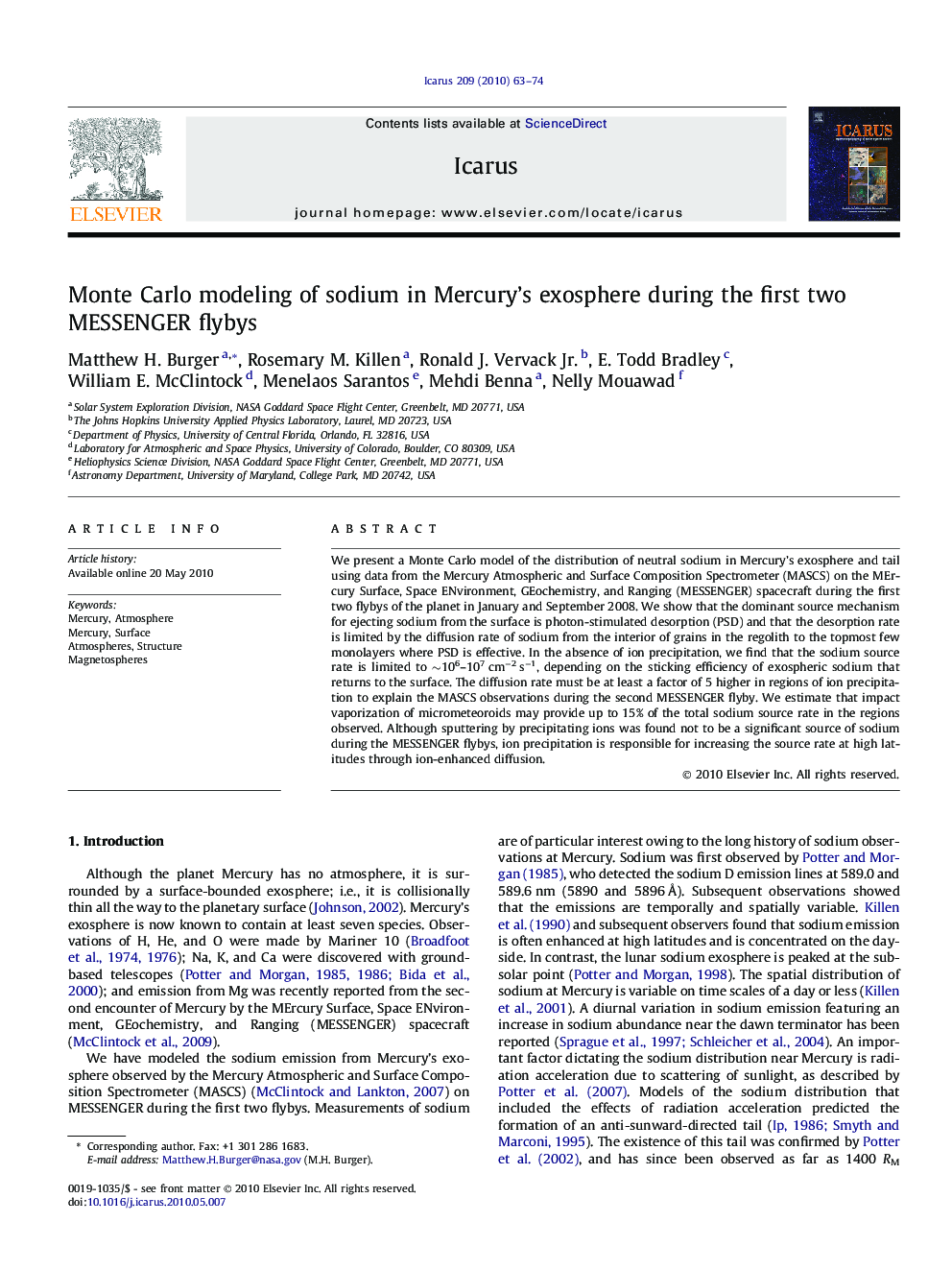| Article ID | Journal | Published Year | Pages | File Type |
|---|---|---|---|---|
| 1774314 | Icarus | 2010 | 12 Pages |
We present a Monte Carlo model of the distribution of neutral sodium in Mercury’s exosphere and tail using data from the Mercury Atmospheric and Surface Composition Spectrometer (MASCS) on the MErcury Surface, Space ENvironment, GEochemistry, and Ranging (MESSENGER) spacecraft during the first two flybys of the planet in January and September 2008. We show that the dominant source mechanism for ejecting sodium from the surface is photon-stimulated desorption (PSD) and that the desorption rate is limited by the diffusion rate of sodium from the interior of grains in the regolith to the topmost few monolayers where PSD is effective. In the absence of ion precipitation, we find that the sodium source rate is limited to ∼106–107 cm−2 s−1, depending on the sticking efficiency of exospheric sodium that returns to the surface. The diffusion rate must be at least a factor of 5 higher in regions of ion precipitation to explain the MASCS observations during the second MESSENGER flyby. We estimate that impact vaporization of micrometeoroids may provide up to 15% of the total sodium source rate in the regions observed. Although sputtering by precipitating ions was found not to be a significant source of sodium during the MESSENGER flybys, ion precipitation is responsible for increasing the source rate at high latitudes through ion-enhanced diffusion.
